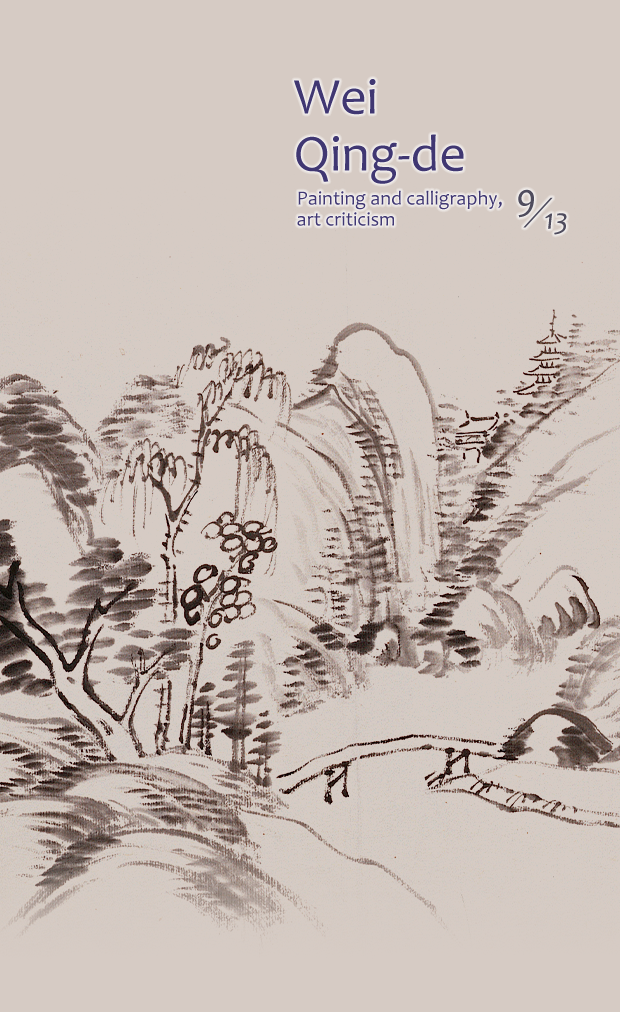

Wei Qing-de (1886-1964), professional name Jun-an, was born in Hsinchu, Taiwan. His father, Wei Tu-sheng, was a Japanese colonial-era scholar who taught at the Chi-Ying Hsuan study, exposing Wei to traditional culture from a very early age. He was given a firm foundation in classical literature from Chang Lin-shu and in poetry from Tseng Chi-fu, but as his father also encouraged his children to get modern education, Wei was also among the first cohort of graduates from the Taiwan Governor-General's National Language School teacher training program. This Western-style education ensured he would emerge into adulthood able to speak both Chinese and Japanese.
In 1910 he joined the Taiwan Nichinichi Sinpou (“Taiwan Daily News") as a Chinese-language reporter, where he was later promoted to head of the Chinese-language news section. He contributed a wide range of writing to the paper, including poetry, travel articles and translations, in addition to edits of Western and Japanese novels, making him a very influential figure in contemporary literary circles. In addition to his work at the paper, Wei was also a member of the Taiwanese Cultural Association and was the third president of the Ying Poetry Society. He was also the only Taiwanese member of the Japanese-oriented Nanya Yin Poetry Society, for which he published several collections of verse that were well received by Japanese and Taiwanese scholars alike. To this day, Wei's verses and couplets can still be found carved into the walls of many temples around Taiwan, including Taipei's Xingtian and Longshan temples and Cingshuei Temple in New Taipei City's Tamsui District. In 1963, he was named Taiwan's poet laureate by the United Poets Laureate International, a competition he competed in alongside Yu You-ren and Ho Chih-hao.
Wei is world-renowned for his poetry, painting and calligraphy, as well as his commitment to furthering the arts. He played an important role in the promotion, critique and sponsorship of the fledgling Taiwanese Art Movement during the Japanese colonial era and took full advantage of his position as a journalist at Sinpou to publish art critiques and regular columns dedicated to epigraphs and art. He also interviewed Chinese and Japanese artists and poets when they came to Taiwan to hold exhibitions, creating an important platform for contemporary arts at the time.
Wei also liked to collect traditional works, which mainly fell under two categories. The first were works by Qing Dynasty artists who lived in Taiwan such as Gan Guo-bao, Xie Guan-qiao and Lu Shi-yi. He also collected a fair amount of work from intellectuals, mostly Chinese, Japanese and Taiwanese politicians, scholars, journalists and poets with whom he had frequent contact. They would often present Wei with works of art or poetry, allowing him to accumulate a collection of contemporary ink painting and calligraphy from people such as Kusakabe Meikaku, Yamamoto Kyozan and Shiotsuki Tōho. This collection forms a window onto the relationships between officials, artists and poets during the Japanese colonial era, offering a valuable historical record of the values and exchanges between the different cultures.
Wei Qing-de's family have donated 338 pieces from his collection to the National Museum of History, including Chinese, Japanese and Taiwanese works of predominantly calligraphy from the Ming and Qing dynasties to the modern era, as well as the artist's own work from 2005, 2007 and 2012. It also contains a copy of Lishu Zhongtang (隸書中堂), a collection of calligraphy in clerical script by Chen Zhen compiled by Wei, bringing the museum's collection of pieces related to the poet to 339. These valuable paintings and calligraphic works are also complemented by correspondence from individuals such as the Qing Dynasty official Shen Bao-zhen and the late Qing/early Republican-era journalist Liang Qi-chao, which have considerable historical research value.
In 2007, the museum held an exhibition of donated works from Wei's collection together with a seminar to explore the artist's life, collection and exchanges with his contemporaries. The exhibition was also accompanied by a catalog.
To thank Wei Qing-de for his outstanding contributions to the development of Taiwanese art in its formative years, and to his family for donating artwork from his collection so they could be enjoyed by others, the National Museum of History has designated the artist's birthday, Sept. 13, as NMH Wei Qing-de Day, as part of its Artists' Day program. The museum welcomes everyone to come witness the evolution of thought, aesthetics and artwork from this transitionary period from the traditional to the modern.
